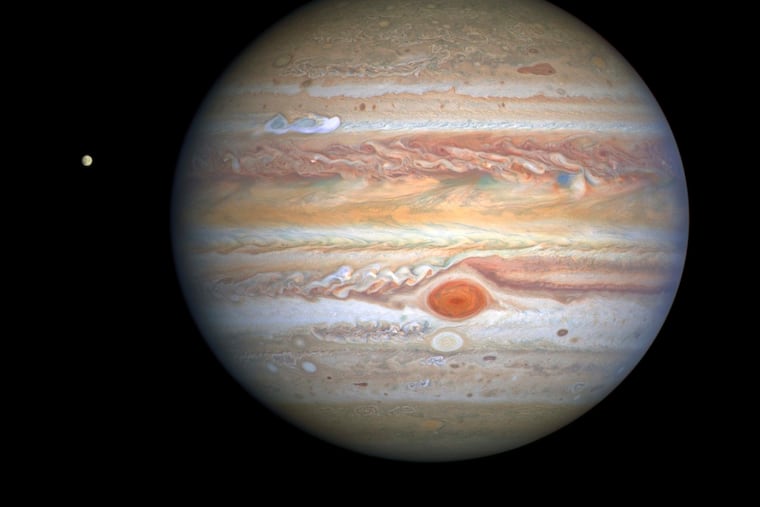Jupiter will dominate the Monday night skies over Philly, making its closest approach since 1963
Jupiter will be twice as bright as the nearest star, plus the moon is taking some time off.

It’s getting harder and harder to shine in the bleached-out night sky around here, but Jupiter is more than up to the challenge, beaming with a rare intensity as it makes its closest approach to earth in 59 years on Monday.
Rising in the east as the sun is setting — and that is more than coincidence — it should be dominant by 9 p.m. as full darkness approaches.
“Jupiter is bright and easy to spot,” said Derrick Pitts, the Franklin Institute astronomer. “No twinkle,” he advises, just “creamy-colored.”
» READ MORE: A lot of folks want to get away from it all, as in way away. Is space tourism ready for takeoff?
It will be perfectly situated Monday night to be especially visible — estimated to be twice as bright as the nearest star.
It will reach “opposition” on Monday. The fact that Jupiter appears to us to be rising in the east as the sun is setting in the west is indicative of the fact that Earth is directly between the largest planet in the solar system and the sun.
Jupiter and Earth are so aligned every 13 months, says NASA, and those are ideal viewing conditions.
But what’s more, Jupiter on Monday night will be making its closest approach to Earth since 1963.
It will be a mere 367 million miles away on Monday, as opposed to 600 million at its farthest point.
It’s close enough that with “good binoculars” it might be possible to see “three or four” of Jupiter’s estimated 79 moons, according to Adam Kobelski, astrophysicist at NASA’s Marshall Space Flight Center in Huntsville, Ala. (Who knows what a full-moon night is like out that way.)
With a telescope one might identify Jupiter’s massive red spot and bands.
» READ MORE: Saturn out-moons Jupiter!?
Jupiter’s dominance in the night sky will be evident even to the unaided eye, and Kobelski said the viewing should be excellent through at least Wednesday night.
And as if to yield the stage to Jupiter — named for the mightiest of the Roman gods and celebrated in the most popular of composer Gustav Holst’s “Planets” suites — the moon will be a no-show well into the week.